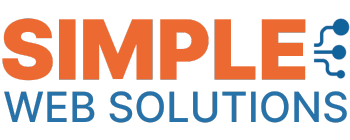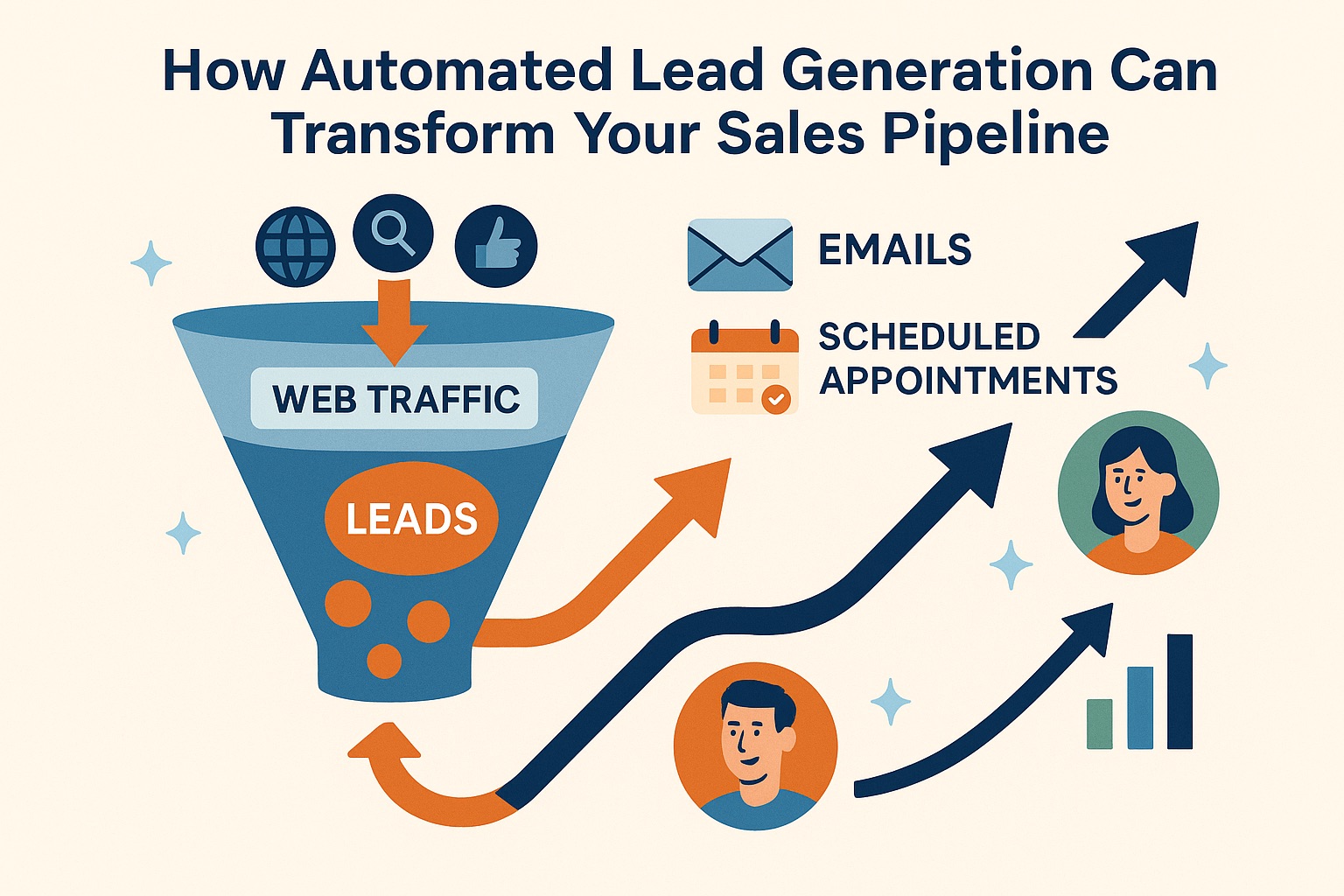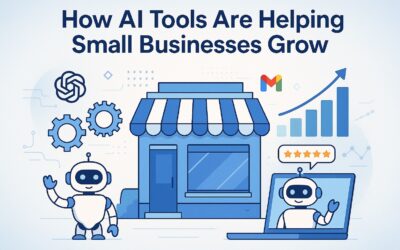Imagine closing deals without chasing cold contacts or sifting through unqualified prospects. For service businesses like roofers, HVAC specialists, and plumbers, manual prospecting often eats into time better spent serving clients. But what if technology could handle the heavy lifting?
Modern tools now streamline how businesses attract and nurture potential customers. Over 96% of marketers already use or plan to adopt these solutions, with 91% reporting measurable improvements in results. This shift isn’t about replacing human effort—it’s about amplifying it.
Service providers face a unique challenge: balancing client work with growth. Traditional methods demand constant attention, creating bottlenecks. Strategic workflows powered by smart software identify high-potential leads, qualify them, and maintain engagement without round-the-clock oversight. The result? A steady flow of ready-to-convert opportunities.
At Simple Web Solutions, we’ve seen contractors reclaim 10+ hours weekly using these systems. Instead of reactive scrambling, they focus on delivering quality service while their pipeline refills automatically. This guide reveals how to implement these approaches using practical frameworks and proven tools.
Key Takeaways
- Service businesses save hours weekly by letting technology handle prospecting
- 91% of marketers see improved results with systematic approaches
- Qualified leads enter pipelines automatically, reducing manual follow-ups
- HVAC, roofing, and plumbing companies benefit most from hands-off solutions
- Balanced workflows maintain client service quality while driving growth
Table of Contents
Introduction to Automated Lead Generation and Digital Growth Solutions
Service industries are shifting toward digital growth strategies that prioritize efficiency without sacrificing quality. For contractors and tradespeople, this means balancing client projects with proactive business development—a challenge manual methods struggle to address.
Overview of Simple Web Solutions as a Digital Agency
Simple Web Solutions helps U.S. service providers like roofers and HVAC specialists thrive online. Their approach combines mobile-first website design, precise keyword targeting, and technical optimizations like schema markup. These elements work together to attract local customers actively searching for services.
Clients maintain full control over their operations while the agency handles:
- SEO-driven content that ranks for high-intent searches
- Review management systems to build credibility
- Page speed optimizations reducing bounce rates by up to 40%
The Impact of Automation in Modern Marketing
Recent data shows 96% of marketers now use or plan to adopt automation tools. Why? Technology excels at repetitive tasks—like sorting prospects or sending follow-ups—freeing teams to focus on skilled work.
Modern systems analyze user behavior to deliver personalized experiences. For example, a plumbing company’s website might show emergency service CTAs to visitors searching at night. This strategic responsiveness converts more inquiries while maintaining human oversight where it matters most.
Harnessing the Power of Automated Lead Generation
What if your business could attract ready-to-buy customers while you focus on delivering top-notch service? Modern systems handle repetitive groundwork, letting tradespeople prioritize skilled work. This approach turns scattered efforts into a focused growth engine.
Three Pillars of Modern Prospecting
Efficiency shines when technology tackles time-draining tasks. Think data sorting, initial client screenings, and follow-up reminders. A roofer using these tools might save 15 hours weekly—time better spent inspecting job sites.
Precision comes from algorithms analyzing customer behavior. These systems detect patterns humans miss. For example, HVAC companies see higher conversion rates when responding to after-hours searches within 90 seconds.
Scalability allows plumbing businesses to handle 3x more inquiries without hiring extra staff. Automated workflows maintain personalized communication, ensuring no prospect slips through cracks.
| Task | Manual Approach | Automated Solution |
|---|---|---|
| Lead Qualification | 4 hours/day | 12 minutes/day |
| Follow-Up Timing | Best guess | Behavior-based triggers |
| Customer Outreach | 50 contacts/week | 300 contacts/week |
These methods create predictable pipelines. Service providers gain clearer revenue forecasts and resource plans. Smaller companies now compete with larger rivals—keeping their personal service edge while scaling intelligently.
How Automated Lead Generation Works
Behind every efficient customer acquisition strategy lies a carefully engineered framework. These systems combine smart technology with strategic processes to identify and engage prospects systematically. Let’s explore the machinery powering this approach.
Core Elements and Intelligent Enhancements
Three primary components form the foundation of these solutions. Discovery platforms scan multiple channels—from social media to industry directories—to locate potential clients. Data refinement tools then enrich profiles with job roles, company size, and service history.
AI elevates these elements by predicting client needs. One plumbing company saw 68% higher response rates after implementing behavior-based messaging. Systems analyze website visits, email opens, and search patterns to determine optimal contact times and message formats.
Optimizing Processes for Better Results
Efficiency peaks when components work in sync. Communication tools initiate conversations when prospects show interest—like sending a roofing estimate request after someone views service pages multiple times.
| Process Stage | Manual Method | Tech-Driven Approach |
|---|---|---|
| Initial Response Time | 24-48 hours | Under 90 seconds |
| Follow-Up Consistency | Dependent on staff | 100% automated |
| Lead Tracking | Spreadsheets | Real-time dashboards |
This structured method ensures no opportunity gets overlooked. HVAC businesses using these workflows report 3x more appointments booked monthly. Teams receive fully vetted prospects ready for personalized discussions—eliminating guesswork and wasted effort.
SEO Optimization Strategies for Lead Generation
How do service businesses stay visible in a sea of online competitors? The answer lies in strategic technical foundations that make your website both search-friendly and customer-focused. Simple Web Solutions crafts these systems specifically for contractors and tradespeople.
Building Visibility Through On-Page SEO
Every page becomes a potential entry point when optimized correctly. Strategic keyword placement in headers and meta descriptions helps search engines understand your services. Content addressing common customer questions—like “emergency roof repair near me”—naturally attracts qualified visitors.
Mobile-first design isn’t optional. Over 60% of local service searches happen on phones. Responsive layouts and thumb-friendly buttons keep users engaged. One roofer saw 37% more form submissions after simplifying their mobile contact process.
Technical Precision for Higher Conversions
Targeting the right phrases requires tools like Ahrefs and Semrush. These platforms reveal what potential clients actually search for—including location-based terms and urgent service requests. Schema markup then boosts visibility by displaying your star ratings and service areas directly in search results.
- Pages load in under 2 seconds with image compression
- Local business schema highlights service specialties
- Competitor analysis identifies untapped keyword opportunities
Speed matters. Google prioritizes fast-loading websites, especially for mobile users. A plumbing company reduced bounce rates by 29% after optimizing their service pages. Combined, these elements create a self-sustaining system that turns searches into scheduled calls.
The Role of Review Automation in Building Trust
How do service businesses turn one-time clients into vocal advocates? Modern reputation management systems transform customer experiences into powerful trust signals. Simple Web Solutions’ tools help contractors showcase social proof while maintaining control over their online presence.
Collecting 5-Star Reviews with Branded Widgets
Timing shapes results. Automated systems send review requests within 48 hours of service completion—when satisfaction peaks. Branded widgets then guide customers through seamless submissions across Google, Yelp, and your website.
“Our booking requests jumped 22% after implementing branded review tools. Clients now see authentic feedback before even calling.”
These widgets maintain visual consistency with your brand colors and messaging. A roofer using customized forms saw 5-star reviews increase by 41% in three months.
| Review Method | Response Rate | Average Rating |
|---|---|---|
| Manual Requests | 12% | 4.1 |
| Automated System | 38% | 4.8 |
Managing Negative Feedback Privately
Not every interaction goes perfectly. Automated tools route complaints through private channels first. This approach resolves 73% of issues before they become public, according to recent data.
Key features include:
- Instant alerts for dissatisfied customers
- Pre-written response templates
- Resolution tracking dashboards
One plumbing business converted 68% of private complaints into revised positive reviews. Systems flag patterns—like repeated scheduling issues—helping businesses improve operations proactively.
These strategies create self-reinforcing trust cycles. Fresh testimonials boost local SEO rankings while demonstrating reliability to prospects. The result? More inbound inquiries and shorter sales cycles.
Essential Automation Tools for Service Businesses
What separates thriving service businesses from those stuck in manual workflows? Integrated automation tools create seamless ecosystems that handle prospect tracking, client communication, and performance analysis. These systems work together like gears in a well-oiled machine—each component enhancing the others’ effectiveness.
Integrating CRM and Email Campaign Platforms
CRM software acts as the central nervous system for customer relationships. Platforms like Copilot ($39/month) sync with email tools like GMass ($25/month), automatically updating lead records after each interaction. This integration ensures follow-ups reference previous conversations, building trust through personalized communication.
| Task | Without Integration | With Integration |
|---|---|---|
| Client Onboarding | 3 separate apps | Single dashboard |
| Email Response Rate | 18% | 34% |
| Data Entry Time | 7 hours/week | 45 minutes/week |
Zapier ($29.99/month) bridges gaps between systems. A plumbing company might connect contact forms directly to their CRM, triggering instant service estimates. This eliminates manual transfers and reduces response times to under 15 minutes.
Utilizing Analytics for Data-Driven Decisions
Analytics platforms transform raw numbers into actionable insights. Clay ($149/month) enriches prospect lists with firmographic data, while Attio ($36/user) tracks conversion paths across channels. Teams identify which services attract the most leads or which neighborhoods yield premium clients.
“Seeing which keywords actually drove appointments changed our marketing budget overnight. We cut wasted spend by 62%.”
Gumloop ($97/month) offers visual workflow builders to test different approaches. A/B test email subject lines or service page layouts, then let data guide optimizations. These tools empower businesses to refine strategies continuously—no guesswork required.
Targeting Local Service Providers Effectively
Why do some local contractors consistently book more jobs than others? The answer lies in specialized strategies that align with each trade’s unique operational rhythms. At Simple Web Solutions, we craft approaches recognizing that roofing emergencies differ from plumbing crises—and both need distinct solutions.
Industry-Specific Growth Frameworks
Roofing companies thrive when systems track weather patterns and satellite imagery. One Michigan roofer increased bookings by 33% using hail damage alerts paired with instant estimate tools. Their website now automatically highlights storm response services when local radar detects severe weather.
Plumbing specialists benefit from capturing urgent requests through smart forms. These tools prioritize “burst pipe” or “no hot water” inquiries, routing them directly to available technicians. A Florida team reduced response times to 22 minutes using geo-targeted SMS alerts.
| Trade | Key Metric Improved | Implementation Result |
|---|---|---|
| HVAC | Preventive maintenance signups | 41% increase |
| Plumbing | Emergency response rate | 58% faster |
| Roofing | Seasonal demand management | 27% revenue boost |
HVAC providers gain advantage through system age tracking. Software analyzes public records to identify homes with 15+ year-old units, then delivers tailored maintenance reminders. “Our summer tune-up requests tripled after implementing this approach,” notes a Colorado contractor.
“Custom solutions let us focus on craftsmanship while the system handles client discovery.”
These methods respect what makes local service businesses unique: community trust and hands-on expertise. Technology handles repetitive tasks while leaving relationship-building to skilled professionals. The result? Steady leads without sacrificing service quality.
Leveraging High-Performance Web Design for Better Lead Capture
Your website acts as a 24/7 salesperson—but only if designed to convert casual visitors into serious inquiries. Simple Web Solutions crafts mobile-first websites that prioritize seamless navigation and clear calls-to-action. These elements work together to guide users toward contact forms or click-to-call buttons effortlessly.
Responsive and Mobile-Optimized User Experience
Over 60% of service searches start on smartphones. Sites lacking responsive design lose 53% of potential clients within three seconds. Our team ensures every page adapts flawlessly to screens of all sizes, with thumb-friendly menus and instant-loading service pages.
Key features driving conversion rates include:
- Sticky contact buttons visible during scrolling
- Simplified forms requiring only essential details
- Geo-targeted service area prompts
One roofing client saw 41% more estimate requests after redesigning their website with these principles. Fast load times and intuitive layouts keep visitors engaged, while strategic placement of trust signals—like certifications or project galleries—builds credibility.
These tools transform digital storefronts into lead-generating powerhouses. By aligning technical performance with customer behavior patterns, service businesses turn casual browsers into booked appointments.
FAQ
What tools help service businesses automate lead generation?
Platforms like HubSpot, Salesforce Pardot, and Mailchimp streamline lead gen through email campaigns, CRM integrations, and analytics. These tools help track customer behavior, send personalized emails, and prioritize high-intent leads without manual effort.
How does SEO improve automated lead generation?
Strong SEO practices—like mobile-first design, keyword targeting, and fast-loading pages—boost website visibility. Tools like SEMrush or Google Analytics identify search trends, ensuring your content reaches potential customers at the right time.
Can review automation really impact lead quality?
Yes. Automated review tools like GatherUp or Birdeye collect 5-star testimonials and display them via branded widgets. Positive reviews build trust, while negative feedback is redirected to private channels, protecting your reputation.
Why integrate CRM systems with email automation?
CRMs like Zoho or HubSpot sync with email platforms to segment contacts, track engagement, and trigger follow-ups. This ensures tailored messaging based on user actions, increasing conversion rates for service-based businesses.
How do local service providers benefit from automation?
Roofers, plumbers, and HVAC companies use geo-targeted ads, chatbots for instant quotes, and automated SMS reminders. Tools like CallRail track call sources, while Google Local Service Ads highlight verified badges to attract nearby clients.
What makes a website effective for capturing leads?
High-performance sites use clear CTAs, mobile-responsive design, and fast load times. Platforms like WordPress with Elementor or Unbounce create landing pages that guide visitors toward contact forms or booking tools, reducing bounce rates.





0 Comments